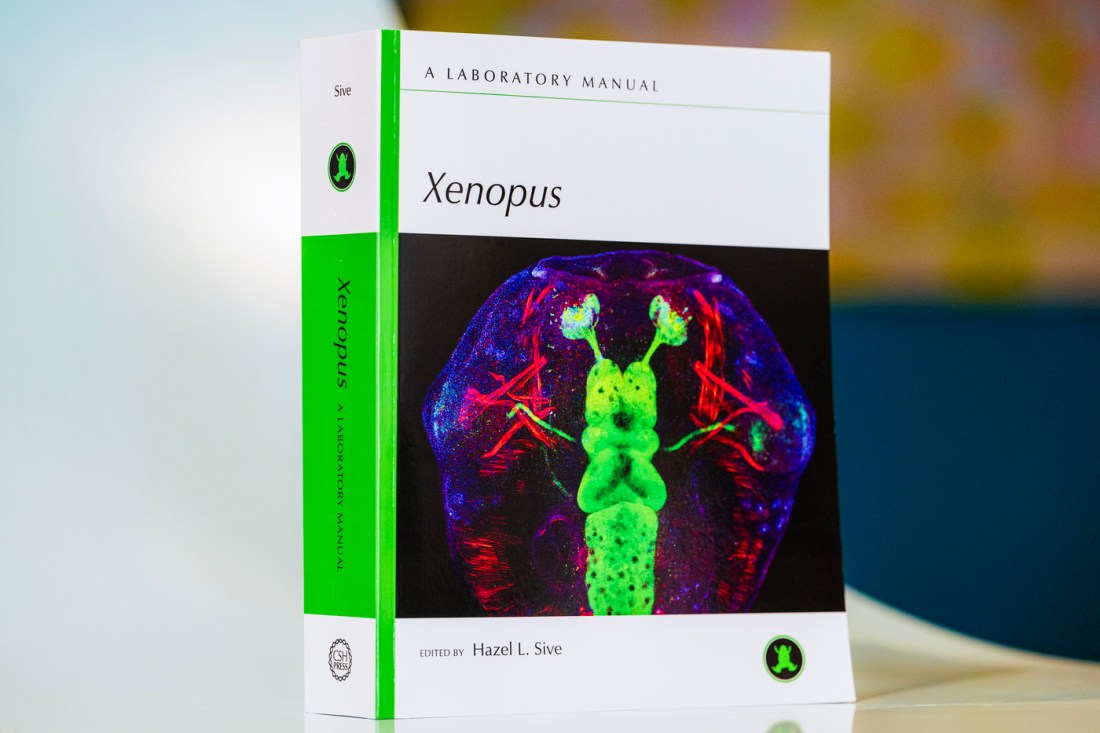
Hazel Sive, the dean of the College of Science and professor of biology at Northeastern University, has edited “Xenopus: A Laboratory Manual,” a new textbook that presents “a comprehensive collection of experimental procedures for research using Xenopus,” according to the publisher’s webpage.
Xenopus — a genus of African frog — make for versatile experiments, as they are “easy to rear and maintain, and large sample sizes of embryos and later stages are readily obtained.”
In an email, Sive wrote that she developed a course on Xenopus over 30 years ago, teaching it through Cold Spring Harbor Laboratory, adding that it is still ongoing. “My goal was to teach researchers how to look after their frogs with kindness and respect, and about the powerful methods that can be applied to this model system.”
The book is an outgrowth of the course and this ethos, Sive wrote, arising out of long experience. “I first encountered the frog Xenopus as an undergraduate in South Africa and was amazed to watch thousands of embryos develop synchronously from single cells into tadpoles.”

In her introduction to “Xenopus: A Laboratory Manual,” Sive writes that “as an undergraduate at Wits University in Johannesburg, South Africa,” she and her colleagues “collected the frogs with nets from local ditches, and in a single sweep scooped up dozens of plump animals. Back in the frog room, if you simply put together a male and female, she would lay hundreds of perfect eggs. Later we put the frogs back in their ditch.”
Their synchronous development — one cell into two, two into four, thousands of eggs all simultaneously — is what inspired Sive’s career trajectory. “Maybe, I thought, one could extract from the embryos chemicals that were making them develop in sync, to understand this magical process,” she continues in her introduction. “The amazing development of Xenopus embryos put me on the career path of developmental biology research.”
“Because we can collect all stages of development,” Sive noted in her email, “the Xenopus system has yielded unparalleled discoveries around the genes and signaling processes that build the vertebrate embryo, with huge contributions to cancer research and other fields.”
The new manual is “a tour de force from the Xenopus community,” Sive continued. “With 18 chapters, 120 protocols and 213 authors, there has never been a book of this magnitude focusing on the Xenopus system.”
According to the publisher’s description, “the book includes basic methods for Xenopus husbandry, egg harvesting, embryo collection, microdissection and visualization, as well as strategies for extract preparation, genetic manipulation, genomic analysis, transcriptomics and proteomics.”
From the beginning, Sive wrote in her email, “I wanted to understand, how did the embryos know what to do? Answering bits of that question has been my life’s work.”
Noah Lloyd is a Senior Writer for NGN Research. Email him at n.lloyd@northeastern.edu. Follow him on X/Twitter at @noahghola.
